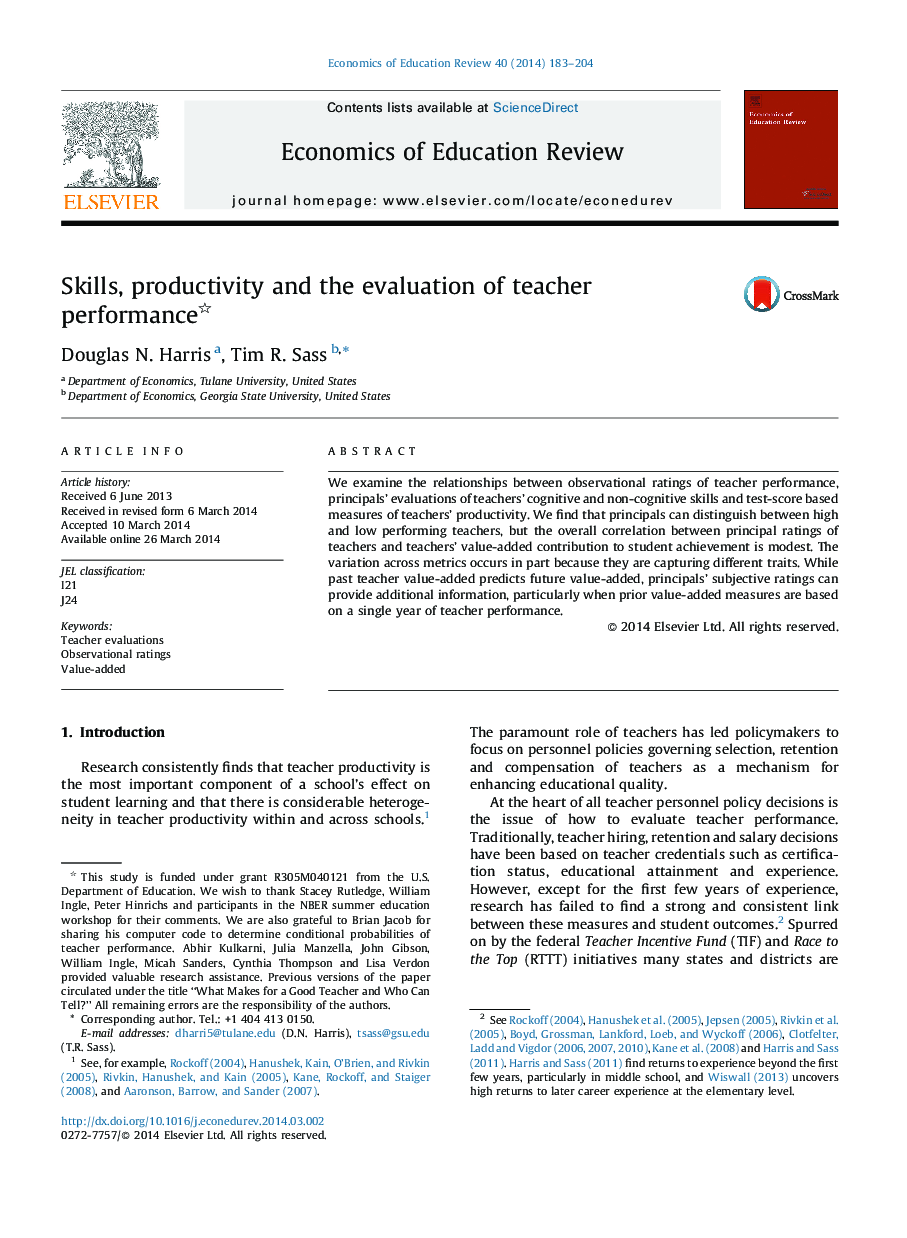| کد مقاله | کد نشریه | سال انتشار | مقاله انگلیسی | نسخه تمام متن |
|---|---|---|---|---|
| 354507 | 1434823 | 2014 | 22 صفحه PDF | دانلود رایگان |
• We compare principals’ evaluations of teachers with value-added measures of teacher performance.
• Principals can distinguish between high and low-value added teachers, but the overall correlation between principal evaluations and value added is modest.
• Principal evaluations capture a different set of personality traits than do value-added measures.
• Past value-added predicts a teacher's impact on student achievement, though in some cases subjective ratings can improve predictive ability.
We examine the relationships between observational ratings of teacher performance, principals’ evaluations of teachers’ cognitive and non-cognitive skills and test-score based measures of teachers’ productivity. We find that principals can distinguish between high and low performing teachers, but the overall correlation between principal ratings of teachers and teachers’ value-added contribution to student achievement is modest. The variation across metrics occurs in part because they are capturing different traits. While past teacher value-added predicts future value-added, principals’ subjective ratings can provide additional information, particularly when prior value-added measures are based on a single year of teacher performance.
Journal: Economics of Education Review - Volume 40, June 2014, Pages 183–204
